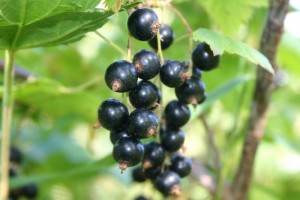 The black currant’s uniqueness is found in the highest amount of Vitamin C per unit of weight among all berries. For comparison, it is over three times greater than that in an orange.
The black currant’s uniqueness is found in the highest amount of Vitamin C per unit of weight among all berries. For comparison, it is over three times greater than that in an orange.
Black currants are sweet and tart and complement your taste buds very well when eaten with red raspberries. Remove them from your refrigerator and wash them in room-temperature water before eating. Fully ripe black currants are sweet and have a juicy firmness. To provide you with quality berries, we grow them in the heirloom tradition in manually tended soil.
Black currants are one of the most healthful berries. They are higher in antioxidant value than blackberries, raspberries, and chokeberries. Antioxidants and other phyto-chemicals in black currants help rid the body of harmful oxygen-derived free radicals, thus protecting you from cancer, aging, inflammation, and neurological diseases. You may find more information in the REFERENCES section.
The ripening season is short, from late July to early August, and subject to the weather.
Taste, aroma, and the greatest overall health benefits are associated with the full ripeness of the berries, when they go from tender to firm.
People who tend to eat at least two servings (two cups) of black currants per week see the most health benefits. Due to the very short season, you usually only have two weeks to enjoy them.
The Eastern European tradition is to preserve black currants for winter as the best food with Vitamin C that does not need to be heated or boiled. Heating and boiling decomposes most Vitamin C in the fruit. Find your own recipes to follow this tradition.
